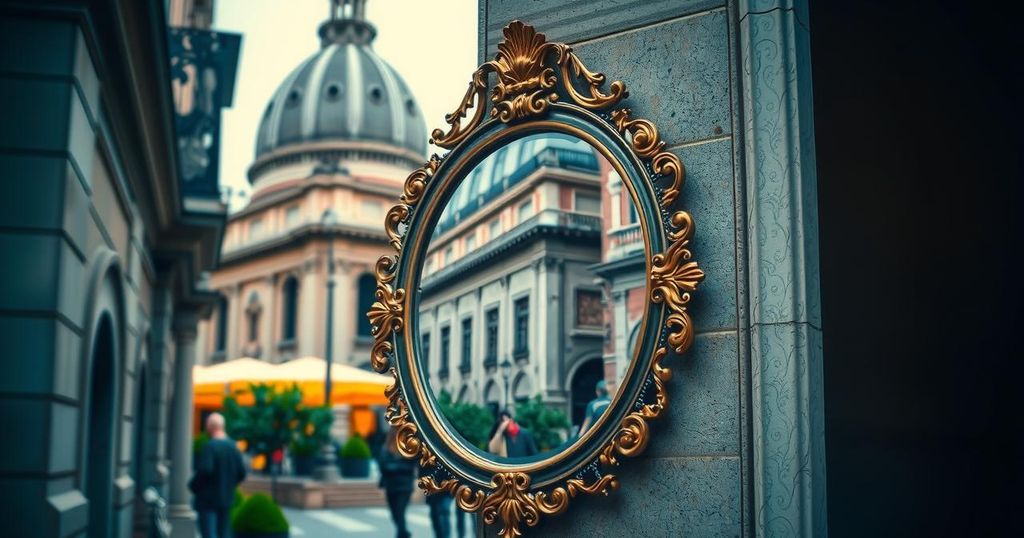Chiesa di Sant’Ignazio di Loyola, a notable 17th-century church in Rome, has two entrances. One entrance caters to those interested in its historical and artistic significance, while the other draws visitors eager to take selfies in what is now considered “the best selfie mirror” in the city. This mirror was added to provide a unique view of the stunning ceiling fresco created by Andrea Pozzo, which depicts Saint Ignatius of Loyola entering paradise with Christ and the Madonna.
The mirror’s installation has ignited a surge in visitors, driven not by interest in the artwork but by viral TikTok trends showcasing the perfect selfie. The church, once a hidden gem, is now inundated with tourists, many prioritizing their social media presence over historical appreciation. Entry to the church remains free, but taking a selfie in the mirror costs €1.
Many visitors, like Noemy Timelli from Puglia, arrive solely for the selfie, having found the location through social media research. Influencers have transformed the church’s profile, causing first-time visitors to overlook traditional landmarks like the Colosseum or Trevi Fountain. Friends often share their selfies before leaving, neglecting to appreciate the church’s historical treasures.
TikTok’s influence extends beyond the mirror, with other sites like a concealed passage near Campo de’ Fiori gaining popularity after a creator shared a video. The passage, once difficult to locate, became a new tourist attraction, showcasing that social media can uncover lesser-known sites. However, not all influencers contribute positively, as some merely promote trends without an interest in the significance behind their chosen locations.
Increased foot traffic has also benefited venues like the Hendrik Christian Andersen Museum, which had seen little interest before social media promotion. Fabrizio Politi, a content creator dedicated to uncovering Rome’s hidden gems, acknowledges the positive impact when previously overlooked sites gain attention. Yet, he underscores the problem of visitors who come solely for selfies rather than education and appreciation of the art.
Despite the selfie craze, some visitors remain curious about the art, like Benedetta Palombo, who reflects on the lost opportunity for exploration. She expresses hope that the influx of younger visitors might inspire a deeper interest in the church’s history, balancing social media trends with cultural awareness as they experience the unique blend of old and new in Rome.
The rising trend of visitors flocking to Chiesa di Sant’Ignazio di Loyola primarily for selfies, catalyzed by social media, underscores a shift in how cultural attractions are perceived and valued. While this trend increases foot traffic and potential appreciation for Rome’s lesser-known sites, it raises concerns about the focus on superficial experiences over genuine cultural engagement. The transformative power of social media in promoting historical sites is evident, but the challenge remains to instill a sense of appreciation for the significant art and history behind these attractions among the visitors drawn in by contemporary trends.




